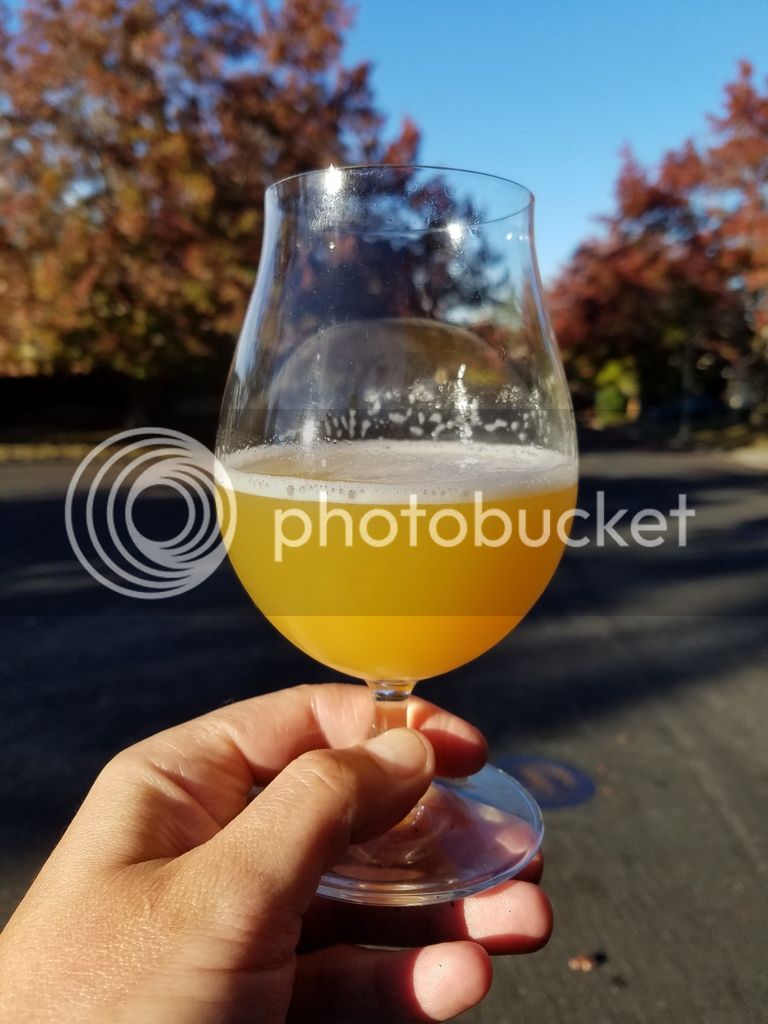armenianbrewer
Well-Known Member
- Joined
- Mar 2, 2016
- Messages
- 119
- Reaction score
- 12
Anyone use WLP644 for this style beer?
Thoughts on this version (3 gal batch, 70% eff, OG 1.059, FG 1.008est)
2-Row, 65.5%
White Wheat, 10.9%
Honey Malt, 7.3%
Flaked Barley, 5.5%
Flaked Wheat, 5.5%
Flaked Oats, 5.5%
1-2 g, Warrior, 16, Boil, (help with boil over)
0.5 oz, Amarillo, 8.6, Whirlpool at 212 °F, 5-10 minutes (leaf hops)
0.5 oz, Mosaic, 12.3, Whirlpool at 212 °F, 5-10 minutes
0.5 oz, Galaxy, 14.3, Whirlpool at 212 °F, 5-10 minutes
0.5 oz, Amarillo, 8.6, Whirlpool at 160 °F, 20-30 minutes (leaf hops)
0.5 oz, Mosaic, 12.3, Whirlpool at 160 °F, 20-30 minutes
0.5 oz, Galaxy, 14.3, Whirlpool at 160 °F, 20-30 minutes
0.5 oz, Amarillo, 8.6, Dry Hop, 8-9 days on day of 4 of fermentation (leaf hops)
0.5 oz, Mosaic, 12.3, Dry Hop, 8-9 days on day of 4 of fermentation
0.5 oz, Galaxy, 14.3, Dry Hop, 8-9 days on day of 4 of fermentation
0.5 oz, Amarillo, 8.6, Keg hop (in serving keg), until kicked? (leaf hops)
0.5 oz, Galaxy, 14.3, Keg hop (in serving keg), until kicked?
0.5 oz, Mosaic, 12.3, Keg hop (in serving keg), until kicked?
total of 2oz each amarillo, galaxy and mosaic for 6 oz. should dry hops and keg hops be bigger? maybe 1oz each at dry hop and keg hop?
Thoughts on this version (3 gal batch, 70% eff, OG 1.059, FG 1.008est)
2-Row, 65.5%
White Wheat, 10.9%
Honey Malt, 7.3%
Flaked Barley, 5.5%
Flaked Wheat, 5.5%
Flaked Oats, 5.5%
1-2 g, Warrior, 16, Boil, (help with boil over)
0.5 oz, Amarillo, 8.6, Whirlpool at 212 °F, 5-10 minutes (leaf hops)
0.5 oz, Mosaic, 12.3, Whirlpool at 212 °F, 5-10 minutes
0.5 oz, Galaxy, 14.3, Whirlpool at 212 °F, 5-10 minutes
0.5 oz, Amarillo, 8.6, Whirlpool at 160 °F, 20-30 minutes (leaf hops)
0.5 oz, Mosaic, 12.3, Whirlpool at 160 °F, 20-30 minutes
0.5 oz, Galaxy, 14.3, Whirlpool at 160 °F, 20-30 minutes
0.5 oz, Amarillo, 8.6, Dry Hop, 8-9 days on day of 4 of fermentation (leaf hops)
0.5 oz, Mosaic, 12.3, Dry Hop, 8-9 days on day of 4 of fermentation
0.5 oz, Galaxy, 14.3, Dry Hop, 8-9 days on day of 4 of fermentation
0.5 oz, Amarillo, 8.6, Keg hop (in serving keg), until kicked? (leaf hops)
0.5 oz, Galaxy, 14.3, Keg hop (in serving keg), until kicked?
0.5 oz, Mosaic, 12.3, Keg hop (in serving keg), until kicked?
total of 2oz each amarillo, galaxy and mosaic for 6 oz. should dry hops and keg hops be bigger? maybe 1oz each at dry hop and keg hop?






































![Craft A Brew - Safale BE-256 Yeast - Fermentis - Belgian Ale Dry Yeast - For Belgian & Strong Ales - Ingredients for Home Brewing - Beer Making Supplies - [3 Pack]](https://m.media-amazon.com/images/I/51bcKEwQmWL._SL500_.jpg)




















